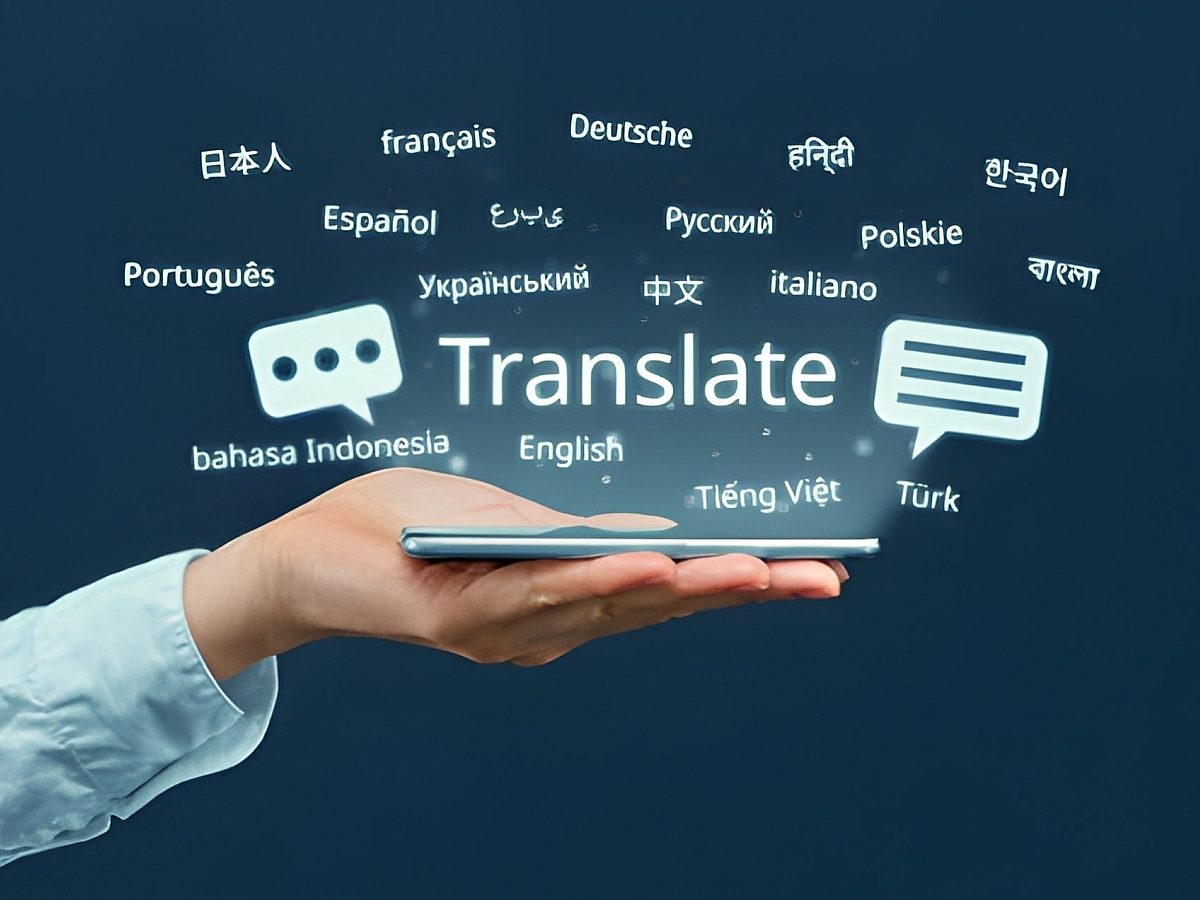In today’s hyperconnected world, having a website isn’t enough. If your business is targeting international markets—or plans to—you need to go a step further. You need to localize.
Website localization is more than just translating text into another language. It’s about adapting your website’s content, design, user experience, and even SEO strategy to suit your target audience in a specific region. It’s what turns a foreign visitor into a local customer.
In this comprehensive guide, we’ll walk you through exactly how to localize a website for global growth. Whether you’re a small startup entering new markets or a large enterprise aiming for scale, you’ll learn everything from strategy and structure to technical setup and optimization.
Why Website Localization Matters
Imagine a French shopper landing on your website and seeing prices in dollars, content in English, and an American contact number. It instantly signals: "This business isn’t for me."
Now imagine that same shopper landing on a version of your site that:
Speaks fluent French
Uses euros
Reflects local culture and terminology
Complies with regional regulations
Which one do you think is more likely to convert?
Localizing your website builds trust, improves user experience, increases engagement, and boosts conversions. In fact, studies show that 72.4% of consumers are more likely to buy a product if the information is in their native language.
Translation vs. Localization: What’s the Difference?
A common misconception is that translation equals localization. But there’s a clear difference.
Translation is the process of converting text from one language to another.
Localization is adapting all aspects of the site—including visuals, cultural references, date formats, currency, tone, and more—to align with the expectations of a specific local market.
For example, translating “Black Friday” into Japanese isn’t enough. You’d also need to understand whether that shopping holiday is even relevant in Japan—and if not, how to promote your sale in a culturally appropriate way.
Step-by-Step: How to Localize a Website
1. Define Your Target Markets
Start by identifying where you're expanding. Are you targeting Spanish speakers in Latin America or Spain? Will you serve Canadian French users or French citizens in France?
These distinctions matter. Even within the same language, vocabulary, spelling, and preferences can vary widely.
Use tools like:
Google Analytics to see where current traffic comes from
Market research to identify new opportunities
Customer personas to tailor content per region
2. Choose the Right Localization Structure
There are several ways to structure your localized website:
Subdirectories (e.g., example.com/fr/)
Subdomains (e.g., fr.example.com)
Country-code domains (e.g., example.fr)
Each has SEO implications. For example, subdirectories are easier to manage and consolidate authority, while country-code domains (ccTLDs) build the strongest local trust but can dilute global SEO strength.
Choose the structure that best fits your long-term strategy and resources.
3. Create a Website Localization Checklist
To localize effectively, you need to go beyond language. Here’s what a typical website localization checklist should include:
Text translation and transcreation
Cultural adaptation of images, icons, colors
Local currency, time zones, and units of measurement
Local contact information, address, and phone numbers
Date and number formats
Legal disclaimers (GDPR, cookie consent, etc.)
Local payment methods and shipping rules
Regional product variations or regulations
This checklist helps ensure your site doesn’t just read well—it feels local.
4. Use Professional Translators (Not Just AI)
While tools like Google Translate may seem tempting, they often lack the accuracy, tone, and context needed for high-stakes business communication.
Instead, use professional translators who:
Are native speakers of the target language
Understand your industry
Have experience in transcreation (adapting content creatively)
Many businesses now use hybrid workflows, combining machine translation for speed with human post-editing for accuracy. At Wolfestone, our localization experts ensure your brand voice is preserved while adapting your message to resonate locally.
5. Optimize for Multilingual SEO
Translating your content is only half the battle. You also need to optimize it for search engines in each local language.
Here’s what effective multilingual SEO optimization includes:
Keyword research in the local language (not just translation of English keywords)
Optimizing metadata: title tags, descriptions, H1s, and URLs
Implementing hreflang tags to help Google serve the right version to users
Creating localized XML sitemaps
Building local backlinks to improve regional authority
This step is critical. Without SEO, your localized content may never reach your target audience.
6. Localize Visuals and UX
Localization isn’t just about text—it’s also about design, layout, and images.
Consider:
Changing imagery to reflect local people, scenery, and customs
Adapting design for right-to-left languages like Arabic or Hebrew
Making sure buttons and forms can accommodate longer translated text
Adjusting fonts for character-based languages like Chinese or Korean
The more culturally aligned your site looks and feels, the more trust you build.
7. Test Your Localized Site
Before launching your localized website, conduct thorough testing:
Linguistic QA: Check for translation errors, formatting issues, and clarity
Functional testing: Ensure all links, forms, and buttons work correctly
User experience testing: Simulate the user journey in each language version
Device and browser compatibility testing
Many companies also do A/B testing between versions to see which headlines, calls-to-action, or layouts work best for each market.
8. Update and Maintain Your Localized Content
Localization isn’t a one-and-done job. As your business grows, so does your content. Make sure you have a system for:
Updating translated pages when English content changes
Localizing new blog posts, product launches, or press releases
Tracking SEO performance across each localized version
Reviewing and improving based on user feedback
Investing in a content management system (CMS) that supports multilingual workflows—like WordPress with WPML or Sitecore—can help streamline updates.
Common Website Localization Mistakes to Avoid
Translating without context: Leads to awkward or inaccurate results
Forgetting SEO tags and metadata: Limits discoverability
Overusing machine translation without review: Damages brand credibility
Ignoring local legal compliance: Could result in penalties (e.g., cookie consent under GDPR)
Using the same visuals across all markets: May feel foreign or irrelevant
Treating all Spanish, Arabic, or English the same: Dialects and cultural nuances matter!
Avoiding these mistakes can save time, money, and reputation.
Localization in Action: A Real-World Example
Let’s say you're a UK-based fashion eCommerce brand expanding into Germany. Simply translating your English content into German may not be enough.
Instead, you’d want to:
Adapt sizing charts to European standards
Show prices in euros, with German VAT included
Offer payment options like SEPA or Klarna
Translate product descriptions with fashion terms specific to German culture
Adjust seasonal marketing campaigns to local shopping holidays
Only with this full localization effort will your site feel like it belongs in Germany—not like a UK site with German subtitles.
Tools and Partners That Help
Website localization is complex, but the right tools and partners make it easier.
Useful tools include:
WPML / Weglot for multilingual WordPress sites
Smartling / Phrase / Lokalise for content management and translation workflows
Screaming Frog SEO Spider for multilingual SEO auditing
Google Search Console & Analytics for monitoring local performance
Better yet, working with a localization agency like Wolfestone means your content is handled by native experts, linguists, and engineers who manage everything—from strategy and translation to testing and compliance.
Localization vs. Internationalization: A Quick Note
While they sound similar, they serve different functions:
Internationalization (i18n) is preparing your website for localization—by designing flexible code, modular content, and scalable architecture.
Localization is the process of adapting content for specific languages and cultures.
Both are essential if you want a truly global, future-ready web presence.
Final Thoughts: Localize to Globalize
In an age where users expect personalized, culturally aware experiences, localization is not optional—it’s essential.
Knowing how to localize a website can open doors to new markets, boost your brand’s credibility, and dramatically improve user experience. From strategic planning to linguistic finesse, it’s a process that, when done right, delivers measurable ROI.
Whether you’re localizing a handful of landing pages or launching a fully translated eCommerce site, one thing is certain: a localized experience is a trusted experience.
At Wolfestone, we specialize in multilingual localization services backed by expert linguists, native content specialists, and ISO-certified processes.
Ready to make your website feel local—wherever your customers are?
Contact us today and let’s build a website your global audience will love.




